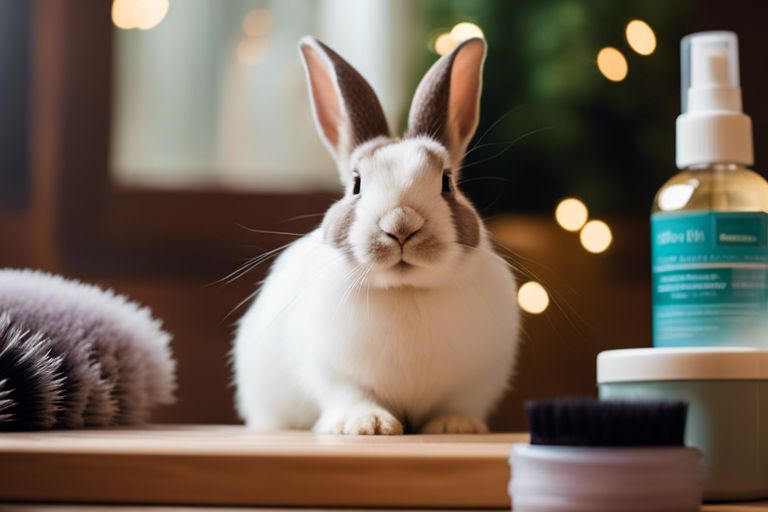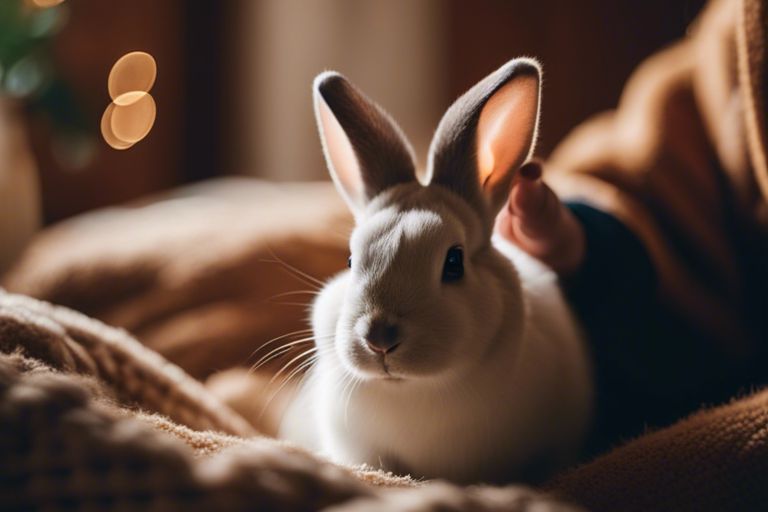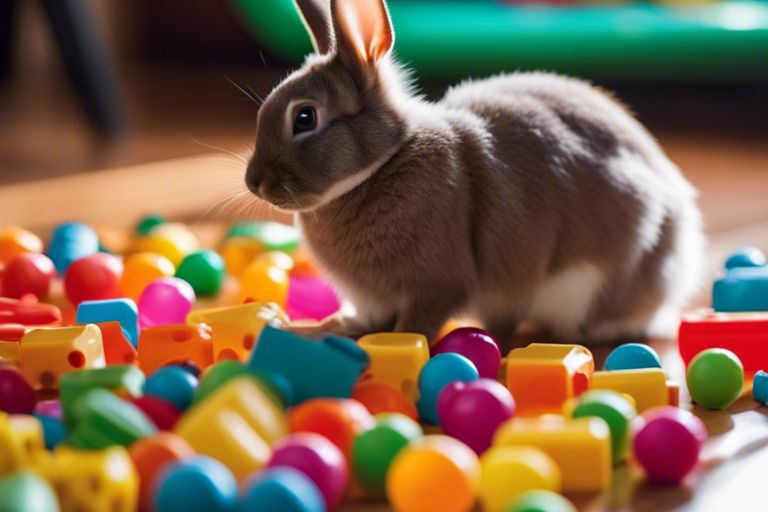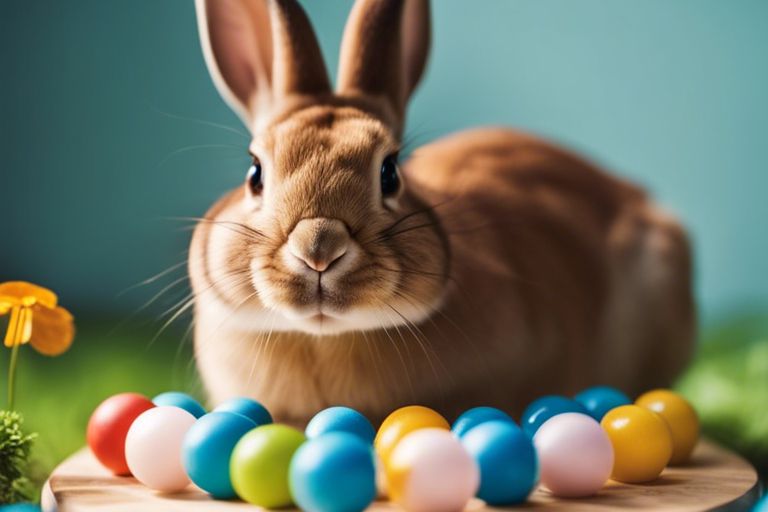The grooming of your rabbit plays a crucial role in maintaining its overall health and appearance. Rabbits, just like any other pets, require regular grooming to ensure their coat stays healthy and shiny. As the proud owner of a fluffy friend, it is important to be equipped with the necessary knowledge and tools to keep your rabbit looking its best.
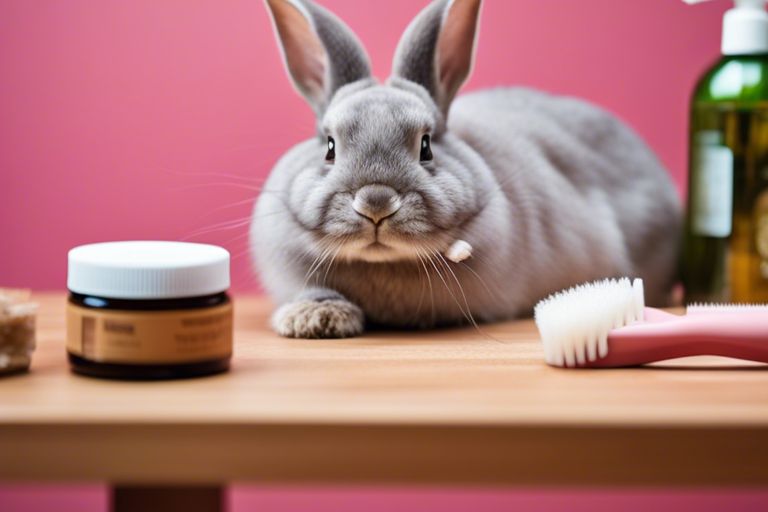
Understanding Rabbit Fur
To keep your rabbit’s coat healthy and shiny, it’s crucial to understand the nature of rabbit fur. Different breeds of rabbits have varying fur types, each with its own unique characteristics. Some rabbits have short, dense fur that requires minimal grooming, while others have longer, silky fur that needs more intensive care.
Different types of rabbit fur
- Himalayan: Medium length fur with a dense undercoat
- Angora: Long, wool-like fur that requires regular grooming
- Rex: Short, plush fur that is velvety to the touch
- Dutch: Short, glossy fur that is easy to maintain
- Lionhead: Mane around the head with a shorter coat on the body
Perceiving and understanding the type of fur your rabbit has will help you tailor your grooming routine to meet their specific needs.
How the rabbit’s coat changes with seasons
An important factor to consider when grooming rabbits is how their coat changes with the seasons. Rabbits, like many animals, experience molting, where they shed their old fur to make way for new growth. This shedding process can vary depending on the breed and the individual rabbit.
Rabbits typically shed more heavily in the spring and fall, as they prepare for the changing temperatures. During these times, it’s crucial to increase the frequency of grooming to help your rabbit remove loose fur and prevent matting.
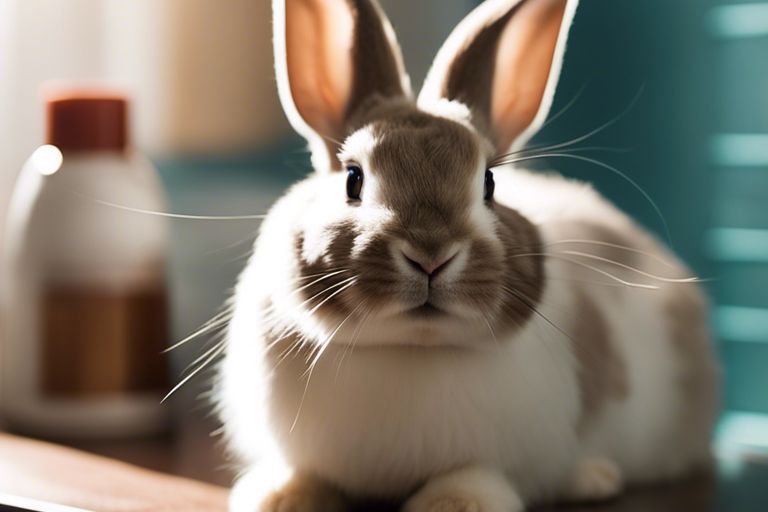
Pre-Grooming Considerations
When to start grooming your rabbit
Little is often said about when to begin grooming your rabbit, but it’s necessary to start the grooming process when your rabbit is young. This will help your rabbit become accustomed to being handled and brushed regularly, making grooming a stress-free experience for both of you. Starting grooming early also helps establish a routine that can prevent matting and other coat issues in the future.
Identifying signs your rabbit needs grooming
Grooming your rabbit should not be based solely on appearance. Look for signs such as excessive shedding, mats or tangles in the fur, a change in grooming habits, or a lackluster coat. A healthy rabbit should have a soft, shiny coat that is free of debris and tangles. Regular grooming can also help you spot any lumps, bumps, or skin issues that may require veterinary attention.
A rabbit’s grooming needs can vary based on their breed, age, and overall health. It’s important to monitor your rabbit’s coat regularly and adapt your grooming routine accordingly to ensure they stay healthy and comfortable.
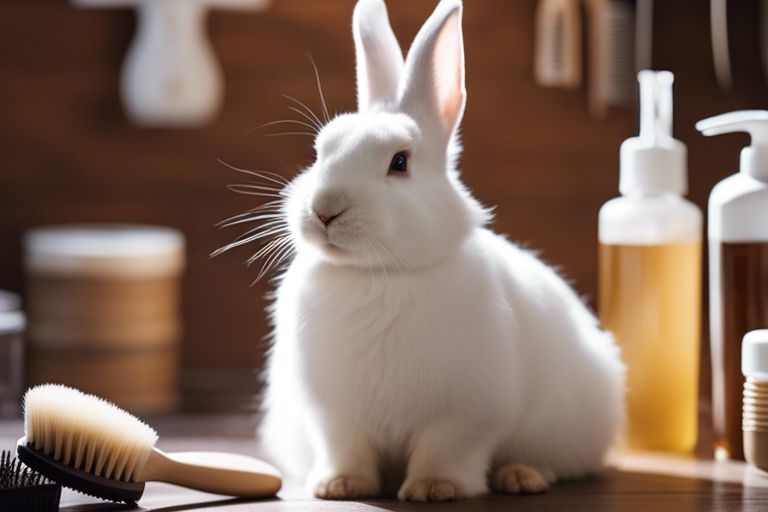
Essential Grooming Tools and Supplies
Brushes and combs suitable for rabbit fur
Combs are necessary for keeping your rabbit’s fur tangle-free and maintaining a healthy coat. Look for combs with fine teeth that can gently glide through your rabbit’s fur without causing any discomfort. Brushes with soft bristles can also be useful for regular grooming sessions, helping to remove loose fur and prevent matting. It’s important to choose grooming tools specifically designed for rabbits to ensure they are gentle and effective.
Clippers, scissors, and nail trimmers – do’s and don’ts
Nail trimming can be a daunting task for many rabbit owners, but it is necessary for maintaining your rabbit’s health and well-being. Clippers and scissors should be used carefully to avoid cutting the quick, which can cause bleeding and discomfort for your rabbit. It’s best to have styptic powder on hand to quickly stop any bleeding if you accidentally cut too short. Regular nail trims can help prevent issues like overgrown nails and potential injuries.
Understanding the proper techniques for using clippers and scissors is crucial to prevent accidents and ensure a stress-free grooming experience for your rabbit. If you’re unsure about how to trim your rabbit’s nails, consider seeking guidance from a veterinarian or professional groomer.
Safe shampoos and skin care products for rabbits
Supplies designed specifically for rabbits are the safest choice when it comes to grooming products. Look for shampoos that are formulated for delicate rabbit skin, as their pH balance is different from that of other animals. A gentle, non-toxic shampoo can help keep your rabbit’s skin clean and healthy without causing irritation. Be sure to rinse thoroughly after shampooing to remove any residue that could irritate your rabbit’s skin.
Plus, using skin care products like moisturizers or conditioners specifically made for rabbits can help keep their skin soft and reduce the risk of dryness or irritation. It’s important to choose products that are free of harsh chemicals and fragrances to protect your rabbit’s sensitive skin.
Grooming Techniques
How to properly hold your rabbit for grooming
One of the most crucial aspects of grooming your rabbit is learning how to properly hold them. This is vital for both your safety and the rabbit’s comfort. When picking up your rabbit, make sure to support their hind legs to prevent them from kicking out. Remember to always hold them close to your body to provide a sense of security and stability. It’s best to work on a non-slip surface to prevent any accidental slips or falls.
Step-by-step guide to brushing and detangling
For a comprehensive brushing and detangling session, you’ll need a soft brush, a fine-toothed comb, and possibly a detangling spray for stubborn knots. Start by gently brushing your rabbit’s fur in the direction of hair growth to remove any loose fur and prevent matting. Use the comb to carefully work through any tangles, starting from the bottom and working your way up. Be patient and avoid pulling on the knots to prevent any discomfort or pain for your rabbit.
Here is a breakdown of the step-by-step guide to brushing and detangling:
| Step | Description |
| 1 | Use a soft brush to remove loose fur |
| 2 | Utilize a fine-toothed comb to work through tangles |
Tips for safely trimming nails and cleaning scent glands
Pertaining to trimming your rabbit’s nails, it’s crucial to use specialized small animal nail clippers to avoid injury. Make sure to only trim the tip of the nail to avoid cutting into the quick, which can cause bleeding and pain. For cleaning the scent glands, a warm damp cloth can be used to gently wipe the area. Pay close attention and consult your veterinarian if you notice any unusual discharge or odor.
- Always have styptic powder on hand in case of accidental nail trimming too short.
- Regularly check your rabbit’s scent glands to prevent any buildup that could lead to infection.
Thou should aim to trim your rabbit’s nails every 4-6 weeks and check their scent glands during grooming sessions to ensure their health and comfort.
Bathing your rabbit: when and how
Guide your rabbit to a washcloth with warm water and gentle pet shampoo for a safe and effective bath. Rinse thoroughly and make sure your rabbit is completely dry before returning them to their living space. Be cautious not to excessively bathe your rabbit, as it can strip their fur of natural oils and lead to skin issues. Bathing should only be done on an as-needed basis or as recommended by your veterinarian.
When grooming your rabbit, always prioritize their well-being and comfort. By following these grooming techniques, you can ensure your rabbit stays healthy, happy, and looking their best.
Addressing Common Coat Problems
Dealing with matting and knots
An vital part of grooming your rabbit is addressing matting and knots in their fur. These can occur in areas where your rabbit cannot reach to groom themselves properly, such as behind the ears or under the chin. An untreated mat can lead to discomfort and even skin issues.
Shedding and how to manage it
With rabbits shedding their fur regularly, it’s vital to know how to manage this natural process. During shedding season, which typically occurs in the spring and fall, rabbits will lose more fur than usual. Regular brushing can help remove loose fur and prevent matting.
This process is crucial for preventing hairballs in rabbits, which can be dangerous to their health if ingested. Use a gentle brush designed for rabbits, such as a slicker brush or comb, to help remove loose fur without causing discomfort to your pet.
Preventing and treating fur chewing
Common in rabbits, fur chewing can be caused by boredom, stress, or dental issues. It’s vital to address the underlying cause to prevent this behavior. Providing your rabbit with plenty of toys, a stimulating environment, and regular exercise can help prevent fur chewing.
Matting resulting from fur chewing can lead to skin irritation and even infection if left untreated. If you notice your rabbit engaging in fur chewing, consult with your veterinarian to address any potential health concerns and develop a plan to prevent this behavior.
Diet and Supplements for Coat Health
The role of nutrition in coat health
All rabbit owners know the importance of a balanced diet for their furry friends, but did you know that nutrition plays a crucial role in the health and appearance of your rabbit’s coat? A diet rich in crucial nutrients is crucial for maintaining a shiny, healthy coat. Poor nutrition can lead to dull, dry fur, and even skin issues in rabbits. Ensuring your rabbit’s diet is nutritionally balanced is key to keeping their coat in top condition.
Vital nutrients and supplements for a shiny coat
On top of a balanced diet, certain nutrients and supplements can further enhance your rabbit’s coat health. Omega-3 fatty acids, found in flaxseed and fish oils, are known to promote a soft and shiny coat in rabbits. Additionally, adding a small amount of biotin to their diet can also improve the overall condition of their fur. These supplements can aid in keeping your rabbit’s coat lustrous and free from common issues like shedding and matting.
On the topic of supplements, it’s important to consult with your veterinarian before introducing any new products to your rabbit’s diet. Some supplements, if given in excess, can have adverse effects on your rabbit’s health. Always follow your vet’s recommendations and dosage instructions carefully to ensure your rabbit reaps the full benefits without any risks.
Foods to avoid for maintaining a healthy coat
Health
Coat: Just as certain foods can enhance your rabbit’s coat health, others can detract from it. Foods high in sugar and carbohydrates, such as treats or processed foods, can lead to coat issues like obesity and dullness. Additionally, high-calcium foods like yogurt drops or nuts can negatively affect your rabbit’s coat and overall health. It’s best to stick to a diet primarily consisting of hay, fresh vegetables, and a small amount of pellets to keep their coat looking its best.
Supplements: While supplements can be beneficial for your rabbit’s coat health, it’s crucial not to overdo it. Excessive amounts of certain vitamins or minerals can lead to imbalances and cause more harm than good. Always consult with your veterinarian before adding any supplements to your rabbit’s diet, and follow their guidance closely to ensure your rabbit’s health and coat remain in optimal condition.
Professional Grooming Services
When to seek professional grooming services
Many rabbit owners wonder when it’s appropriate to seek professional grooming services for their furry companions. While regular grooming at home is necessary, there are certain situations where a professional touch is necessary. If you notice matted fur that you can’t easily remove, overgrown nails, or if your rabbit has special needs that require expertise, it may be time to consider professional grooming.
What to expect from a rabbit grooming session
Grooming your rabbit at home can be a challenge, especially if your rabbit is uncooperative or has particularly dense fur. When you take your rabbit to a professional groomer, you can expect a calm and controlled environment where your rabbit will be handled with care. A groomer will have the tools and experience to safely trim your rabbit’s nails, remove mats, and groom their coat to keep it healthy and shiny.
It’s necessary to establish a regular grooming routine to keep your rabbit comfortable and healthy. Professional groomers can provide valuable advice on how to maintain your rabbit’s coat between grooming sessions, ensuring your pet remains in top condition.
How to choose a reliable rabbit groomer
Professional rabbit groomers should have experience working with rabbits specifically, as they have delicate skin and unique grooming needs. Look for groomers who are certified or have a good reputation in the rabbit grooming community. Ask for recommendations from other rabbit owners or your veterinarian to find a reliable groomer who will put your rabbit at ease during the grooming process.
When choosing a groomer, ensure they have a clean and well-equipped grooming area that is safe for your rabbit. A reputable groomer will also take the time to understand your rabbit’s temperament and any specific grooming requirements they may have.
Routine Maintenance and Best Practices
Establishing a regular grooming schedule
Keep your rabbit’s coat in optimal condition by establishing a regular grooming schedule. Depending on the breed and coat length of your rabbit, grooming may need to be done daily, weekly, or monthly. Consistency is key to preventing mats, tangles, and other coat issues.
Recording your rabbit’s grooming history
Establishing a grooming record for your rabbit can help you keep track of when grooming tasks were last performed, such as nail trims, ear cleanings, and brushings. This record can also help you identify any changes in your rabbit’s coat quality or grooming preferences over time.
Grooming histories can be especially useful when seeking veterinary advice or grooming assistance from a professional. By having a detailed record of your rabbit’s grooming habits and any concerns you may have noticed, you can provide valuable information to those helping care for your rabbit.
Educating yourself on breed-specific grooming needs
With over 60 rabbit breeds recognized by the American Rabbit Breeders Association, it’s crucial to educate yourself on the specific grooming needs of your rabbit’s breed. Different breeds may have varying coat types, lengths, and care requirements that influence how you groom and maintain their coat.
For instance, long-haired breeds like Angora rabbits require more frequent grooming to prevent matting and keep their fur in top condition. On the other hand, short-haired breeds may only need occasional brushing to remove loose fur and debris. Understanding your rabbit’s breed-specific grooming needs can help you provide the best care for their coat.
Summing up
The grooming of your rabbit is crucial for maintaining a healthy and shiny coat. By following these tips and tricks, you can ensure that your rabbit looks its best and feels comfortable. Regular brushing, proper diet, and creating a safe grooming environment are all necessary components of keeping your bunny’s coat in top condition.
Be mindful of, a well-groomed rabbit is a happy rabbit. By investing time in grooming your furry friend, you are not only keeping them looking their best but also preventing potential health issues. With the right tools and techniques, you can make the grooming process a bonding experience for both you and your beloved pet.
FAQ
Q: Why is grooming important for rabbits?
A: Grooming is vital for rabbits to prevent matting, remove loose fur, and maintain a healthy coat. It also helps in preventing hairballs and allows you to check for any skin issues or parasites.
Q: How often should I groom my rabbit?
A: Rabbits with short coats should be groomed 1-2 times a week, while those with long coats may require grooming every day. The frequency also depends on the shedding season and your rabbit’s individual needs.
Q: What tools do I need for grooming my rabbit?
A: Essential grooming tools for rabbits include a slicker brush, a comb, nail clippers, and a small pair of scissors for trimming. It’s important to choose tools specifically designed for rabbits to avoid causing any harm.
Q: How should I approach grooming a rabbit that is not used to it?
A: When grooming a rabbit that is not used to it, start slowly and gently. Use treats to reward good behavior and make the grooming sessions short initially. Gradually increase the time as your rabbit becomes more comfortable with the process.
Q: Are there any specific tips for maintaining a rabbit’s coat shiny and healthy?
A: To keep your rabbit’s coat shiny and healthy, ensure they have a balanced diet rich in hay, groom them regularly to prevent matting, provide a clean living environment, and consult a veterinarian if you notice any changes in their coat or skin.
